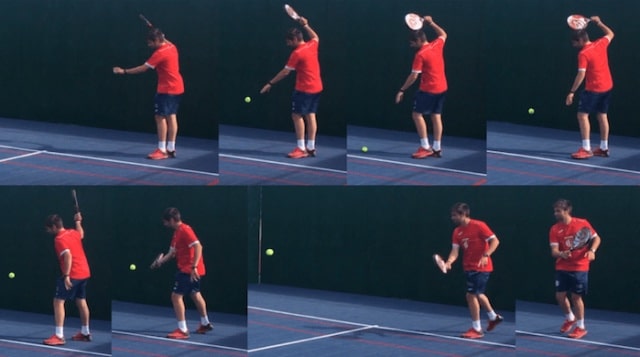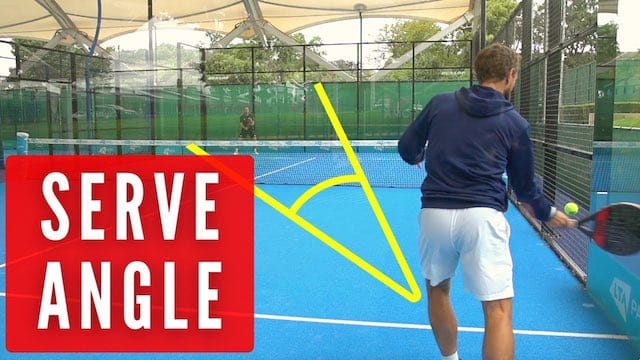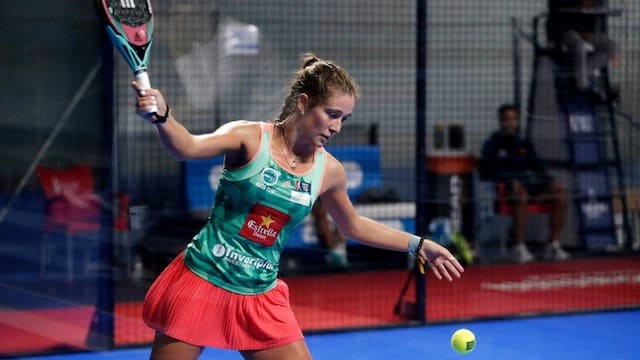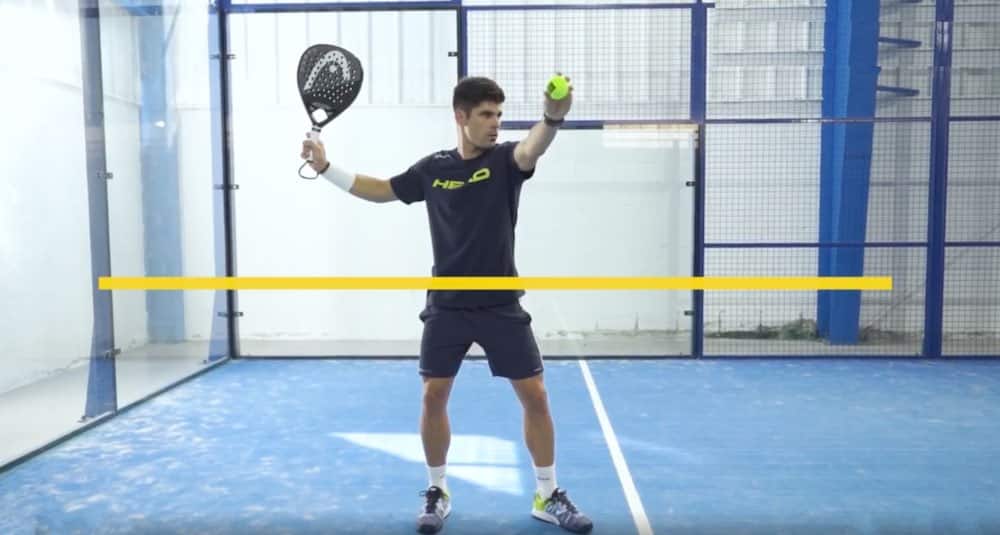Like Tennis, Padel also understands the concept of Aces, which is when a player cannot return to their opponents’ service.
True aces, or aces where the opponent can’t even reach the ball, are possible. The best part is, you can train your services to achieve aces just like the pro players (when facing an amateur).
It just takes PRACTICE and the RIGHT TECHNIQUE.
Let’s look at the best ways to achieve an ace in Padel.
We’ll go over the proper techniques, strategies, and angle you will need to ensure that your Padel service goes where you want it to.
Your game starts with a great padel serve

The devil is in the details, and so is your ability to make an ace during your serve.
There are many factors to consider to give yourself the best chance at hitting an ace, and every small detail counts.
Let’s run through the fundamental positions, swinging force, Padel rules of the serve, and ways of ensuring that your service leaves your opponents stumped and your audience cheering.
Position: Where to stand
Knowing where and how to stand when serving has less to do with releasing the best services and more with obeying the sport’s rules.
Padel serving rules in action:
- You must stand behind the service line, between the center line and the side wall (at the end-center of your area)
- You can be standing in place or moving towards your next location while serving (as long as you hit the ball while in the right zone)
- One foot should remain on the court even while moving, and you cannot go past the service line
- Bouncing the ball once on the court begins the serve
- You can use the backhand or forehand swing as long as you hit the ball below waist height
These are just some of the serving rules in Padel.
You must remember to stand behind the service line when serving. You can do it while standing or moving if you strike below waist height.
Recommended reading:
Getting the Right Serving Motion
Now that you understand where to stand and what rules apply when serving, you can go through the motions.
The swing that produces the best effect is the one that starts behind you. This gives you the ability to follow through.
You have enough room to push the balls where you want them to go. You can generate more spin or increase the force and velocity applied.
This contrasts with most servers’ common move, starting with the ball and racket in the middle. They lack room to swing and make up for it with quick, inaccurate shots.
Increasing Your Effectiveness
You can consult our handy guide to padel positions for more details to help you improve when serving.
A tip to improve your effectiveness is to extend your swing and follow through. It also helps if you try to hit the ball in the sweet spot of your padel racket.
You can switch up your angles and make your opponents run everywhere, trying to anticipate your next move.
Whatever you do, make sure not to short-stroke. A longer swing provides you with more options.
Using Your Serve as a Weapon
The benefits of controlling your shot are that you can direct your balls to where your opponents are not, making responding difficult or even impossible, and that you get points in without having to go back and forth.
The services are devastating when properly utilized, as you can see in this video when Miguel Lamperti does his famous “down-the-middle-curve-away-from-player”-serve. Incredible!
Using the Backhand Serve
Padel officials accept Padel’s many different shots, such as forehand and backhand serves. They will allow you to save the balls from bouncing or ensure success when serving.
The backhand is a unique position that produces distinct advantages because it creates angles your opponents can’t anticipate, let alone counter.
It throws them off and gives you a mental edge during your bout.
Different strategies to perform a Service Ace in Padel

There are many ways to perform a serve. Each method has the same end goals: confuse opponents, give them less room to maneuver, and ensure that your swing gives you free points.
The four ways of performing a great serve, which might lead to an ace, are:
1) “The short decoy”
This move is possibly the most infuriating for your opponents because they’ll think your shot won’t make it to the other side, only for them to be too far away from the net to catch it.
This is similar to the underarm serve in Tennis, made famous in recent years by Nick Kyrgios.
The key is to swing straight up as your serve, giving it a complete arc that’s too short to follow or intercept.
2) Hitting it close to the central line/or on the line (the service line)
This move is easy to execute but devilish in its intent.
By hitting the ball close to the center line, you’ll give your opponents pause as they silently debate whom of them has that sector covered.
Combining this strike with an outside spin makes it impossible for your opponents to reach the ball in time.
It will bounce off the ground, and the points will bounce into your lap.
3) Hitting a low service that bounces in double glass
This move is difficult to save, giving your opponents a massive headache.
By hitting a low serve that bounces on the side and back wall, they don’t have a clue where to intercept the ball.
This makes predicting the ball’s path close to impossible. Your opponents will be flailing around, bumping into each other, or hesitating until the ball hits the court, giving you your point.
4) Hitting a low and powered service towards the side glass (hard to time)
By hitting a serve just high enough to clear the net but low enough to give your opponents grief, you’re forcing them to run headlong into the side glass to try to catch the serve before it hits the glass.
This move is hard to time, as running to the glass too soon will remove their ability to make a full swing, and running too late means the ball already bounces on the court, giving you the point.
Conclusion

There are several major benefits of hitting an ace during your service. It lets you get the point in while you have full control and dictate the match’s pace.
The best way to ensure an ace is generally to practice, manage your ball’s movement and accept that higher players may not fall for a hard serve.
When they do, however, it’s a beauty to behold.
Frequently asked questions about serving an ace in Padel
Padel players will generally use a service to start trading shots back and forth during the match.
However, you will discover below that services are much more powerful when you use them to hit an ace.
The one hit in Padel you have complete control over is the serve. You can maximize this opportunity by serving an ace, which is possible. You get your point without your opponents being able to do anything. It’s hard, but with the right training, you can do it.
Focusing on the four ways above (short decoy, close to the central line, double glass low service, side glass low service) will allow you to turn your service into a weapon and potentially gain an ace.
A Padel cannot bounce twice on your side of the court. Per the games rules, the ball can only bounce once on your side of the net (when you drop it) and can only be hit once to be considered in play.
While the vast majority of services in Padel are made with the forehand swing because of its higher degree of control, elite players like Paquito Navarro can get the point using a quality backhand serve.
An excellent Padel player can achieve the right speed, spin, and direction when serving the ball. They do this by starting the swing behind them, giving them enough time to swing the ball where they want it to go.
You can serve backhand in Padel, though it is highly uncommon. Practicing this move throws your opponents off their game, making services much more effective on the court.

Patricia Nguyen is a former pickleball player who joined SimplePadel as a Content Writer in late 2022. She lives in Texas with her two dogs and is an avid fan of the sport. Her favorite player is Ale Galán, whom she believes to be the best defensive padel player that ever played the game.

5 replies on “What is an Ace in Padel, and how do I achieve it?”
[…] excellent serve can get the ball rolling, and an ace from your service can give you an instant point that can set you up for […]
[…] good serve would help your team take advantage of the net position or even score a point by producing an ace. It’s also the shot that dictates the ball’s direction, spin, and […]
[…] What is an Ace in Padel, and how do I achieve it? […]
[…] You should also consider buying it if you enjoy hitting fast balls and making short serves. […]
[…] By being an ideal blend of being light, comfortable, and providing powerful shots, this paints the Wilson Blade Pro V2 as spontaneous reactions with powerful serves. […]